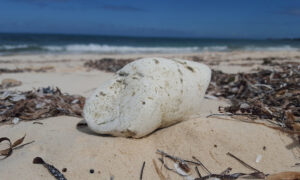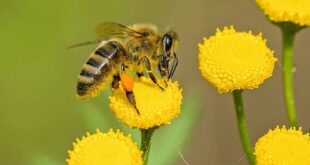The season of beach combing is upon us, and what could be more exciting than striking it super-lucky while enjoying one of your favourite activities! We’re talking about finding ambergris, a rare and highly valuable natural material which washes up on beaches around the world – including our own.
 Sometimes referred to as ‘marine gold’, ambergris is a substance that accumulates in a sperm whale’s digestive system. It’s purpose is to protect the mammal’s gut from the sharp bits and pieces that make up the food the mammal swallows (food such as cuttlefish and squid). The whale eventually expels the solid wax-like ambergris, through its mouth. As it is tossed about in the ocean, and ages, the ambergris takes on a peculiar scent (sometimes described as ‘musky’). It’s a scent which the makers of perfumes consider highly desirable, and which they use in their industry both as an ingredient, and also a fixative (a substance which helps fragrance to linger).
Sometimes referred to as ‘marine gold’, ambergris is a substance that accumulates in a sperm whale’s digestive system. It’s purpose is to protect the mammal’s gut from the sharp bits and pieces that make up the food the mammal swallows (food such as cuttlefish and squid). The whale eventually expels the solid wax-like ambergris, through its mouth. As it is tossed about in the ocean, and ages, the ambergris takes on a peculiar scent (sometimes described as ‘musky’). It’s a scent which the makers of perfumes consider highly desirable, and which they use in their industry both as an ingredient, and also a fixative (a substance which helps fragrance to linger).
Ambergris ranges in quality but some of the better pieces to be found can fetch close to $30 a gram. To make things even more exciting, although ambergris is usually found in pieces the size of an egg, it has been discovered in sizable chunks. In 2021, fishermen in Yemen hauled up a 113 kilo piece of ambergris in their nets. It fetched over 2.5 million dollars on the market (and if that doesn’t get you out for a brisk beach walk in the morning, nothing will!).
Of course, as we all know, there are a number of strange objects to be found on beaches, many of which are difficult to identify, and most of which are gray, white, brown or black in colour (just like ambergris). So how do you know if what you’ve discovered is the real McCoy?
For starters, ambergris tends to have a smooth surface, the result of having been being rolled around in the sea for a long period of time. Some pieces of ambergris are roundish or oval in shape, but others are like chunky nuggets. And while ambergris may feel hard and rocky, it is actually waxy. If you cup it in the palm of your had for several minutes, and warm it up, this will become apparent.
If in any doubt about what you’ve found, start by using ‘the needle’ test to help you decide if your find is worth keeping. To carry out the test, hold a needle with heat-proof tongs, and heat the tip of the needle until it’s very hot. Lay the heated tip against the surface of what you hope is the ambergris. If the surface melts and produces a sticky, dark colour, you may be looking at the real thing! Expert ambergris hunters, or a buyer, will almost certainly need to be brought in to confirm your hunch, in which case, contact them through the Ambergris NZ site. This helpful site also features photos of ‘ambergris look-alikes’ to help you determine what else your ‘ambergris’ might be.
As for the best places to head for on your hunt, West Coast beaches are thought to be more likely to yield up the goods, but ambergris has also been found on the other side of our islands.
If you don’t manage to find ambergris on your beach walks, there are plenty of other interesting objects to look for, from antique bottles to fossils and rare shells. And if you value your beach as much as most beachcombers do, you’ll also want to carry a small rubbish bag with you, so you can bring home what’s not so valuable. Happy ambergris hunting!









Join the Discussion
Type out your comment here:
You must be logged in to post a comment.